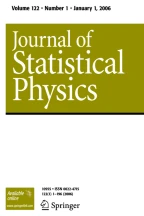Abstract
Tessellation models have proven to be useful for the geometric description of grain microstructures in polycrystalline materials. With the use of a suitable tessellation model, the complex morphology of grains can be represented by a small number of parameters assigned to each grain, which not only entails a significant reduction in complexity, but also facilitates the investigation of certain geometric features of the microstructure. However, for a given set of microstructural data, the choice of a particular geometric model is traditionally based on researcher intuition. The model should provide a sufficiently good approximation to the data, while keeping the number of parameters small. In this paper, we discuss general aspects of the process of model selection and suggest several criteria for selecting an appropriate candidate from a certain set of tessellation models. The choice of candidate represents a trade-off between accuracy and complexity of the model. Here, the selected model is used solely to approximate given data samples, but it also provides guidance for developing stochastic tessellation models and generating virtual microstructures. Model fitting is carried out by simulated annealing, applied in a consistent manner to twelve different tessellation models.
Similar content being viewed by others
References
Akaike, H.: Information theory and an extension of the maximum likelihood principle. In: B.N. Petrov and F. Csaki (eds.) Proceedings of the 2nd International Symposium on Information Theory, pp. 267–281. Akademiai Kiado, Budapest (1973)
Alpers, A., Brieden, A., Gritzmann, P., Lyckegaard, A., Poulsen, H.F.: Generalized balanced power diagrams for 3D representations of polycrystals. Philos. Mag. 95(9), 1016–1028 (2015)
Altendorf, H., Latourte, F., Jeulin, D., Faessel, M., Saintoyant, L.: 3D reconstruction of a multiscale microstructure by anisotropic tessellation models. Image Anal. Stereol. 33(2), 121–130 (2014)
Aurenhammer, F.: Power diagrams: Properties, algorithms and applications. SIAM J. Comput. 16(1), 78–96 (1987)
Aurenhammer, F., Klein, R., Lee, D.T.: Voronoi Diagrams and Delaunay Triangulations. World Scientific Publishing, Singapore (2013)
Cherkassky, V., Mulier, F.M.: Learning from Data: Concepts, Theory, and Methods, 2nd edn. Wiley-IEEE Press, Hoboken (2007)
Chiu, S.N., Stoyan, D., Kendall, W.S., Mecke, J.: Stochastic Geometry and Its Applications, 3rd edn. Wiley, Chichester (2013)
Dake, J.M., Oddershede, J., Sørensen, H., Werz, T., Shatto, J.C., Uesegi, K., Schmidt, S., Krill III, C.E.: Direct observation of grain rotations during coarsening of a semisolid Al–Cu alloy. Proc. Natl Acad. Sci. U.S.A. 113, E5998–E6006 (2016)
Gelfand, A., Diggle, P., Guttorp, P., Fuentes, M.: Handbook of Spatial Statistics. Chapman & Hall/CRC, London (2010)
Groeber, M.A., Jackson, M.A.: DREAM.3D: A digital representation environment for the analysis of microstructure in 3D. Integr. Mater. Manuf. Innov. 3(1), 1–17 (2014)
Jeulin, D.: Random tessellations and Boolean random functions. In: Luengo Hendriks, C.L., Borgefors, G., Strand, R. (eds.) Mathematical Morphology and Its Applications to Signal and Image Processing, pp. 25–36. Springer, Berlin (2013)
Lyckegaard, A., Lauridsen, E.M., Ludwig, W., Fonda, R.W., Poulsen, H.F.: On the use of Laguerre tessellations for representations of 3D grain structures. Adv. Eng. Mater. 13(3), 165–170 (2011)
Okabe, A., Boots, B., Sugihara, K., Chiu, S.N.: Spatial Tessellations: Concepts and Applications of Voronoi Diagrams, 2nd edn. Wiley, Chichester (2000)
Scheike, T.H.: Anisotropic growth of Voronoi cells. Adv. Appl. Probab. 26(1), 43–53 (1994)
Schwarz, G.: Estimating the dimension of a model. Ann. Stat. 6(2), 461–464 (1978)
Spettl, A., Wimmer, R., Werz, T., Heinze, M., Odenbach, S., Krill III, C.E., Schmidt, V.: Stochastic 3D modeling of Ostwald ripening at ultra-high volume fractions of the coarsening phase. Model. Simul. Mater. Sci. Eng. 23(6), 065001 (2015)
Spettl, A., Brereton, T., Duan, Q., Werz, T., Krill III, C., Kroese, D.P., Schmidt, V.: Fitting Laguerre tessellation approximations to tomographic image data. Philos. Mag. 96(2), 166–189 (2016)
Šedivý, O., Brereton, T., Westhoff, D., Polívka, L., Beneš, V., Schmidt, V., Jäger, A.: 3D reconstruction of grains in polycrystalline materials using a tessellation model with curved grain boundaries. Philos. Mag. 96(18), 1926–1949 (2016)
Šedivý, O., Dake, J., Krill III, C., Schmidt, V., Jäger, A.: Description of the 3D morphology of grain boundaries in aluminum alloys using tessellation models generated by ellipsoids. Image Anal. Stereol. 36, 5–13 (2017)
Teferra, K., Graham-Brady, L.: Tessellation growth models for polycrystalline microstructures. Comput. Mater. Sci. 102, 57–67 (2015)
Valiev, R.Z., Langdon, T.G.: Principles of equal-channel angular pressing as a processing tool for grain refinement. Prog. Mater. Sci. 51(7), 881–981 (2006)
Vapnik, V.N.: Statistical Learning Theory. Wiley-Interscience, New York (1998)
Vapnik, V.N.: The Nature of Statistical Learning Theory, 2nd edn. Springer, New York (2000)
Acknowledgements
This research was funded by the German Science Foundation (DFG) and the Czech Science Foundation (GACR, Project Number 17-00393J). We are grateful to the Japan Synchrotron Radiation Research Institute for the allotment of beam time on beamline BL20XU of SPring-8 (Proposals 2012A1427 and 2013A1506), and we thank Dmitri Molodov of the Institute of Physical Metallurgy and Metal Physics, RWTH Aachen, for providing the Al–1 wt% Mg specimen.
Author information
Authors and Affiliations
Corresponding author
Rights and permissions
About this article
Cite this article
Šedivý, O., Westhoff, D., Kopeček, J. et al. Data-Driven Selection of Tessellation Models Describing Polycrystalline Microstructures. J Stat Phys 172, 1223–1246 (2018). https://doi.org/10.1007/s10955-018-2096-8
Received:
Accepted:
Published:
Issue Date:
DOI: https://doi.org/10.1007/s10955-018-2096-8
Keywords
- Model selection
- Polycrystalline material
- Tessellation
- Akaike information criterion
- Bayesian information criterion
- Structural risk minimization
